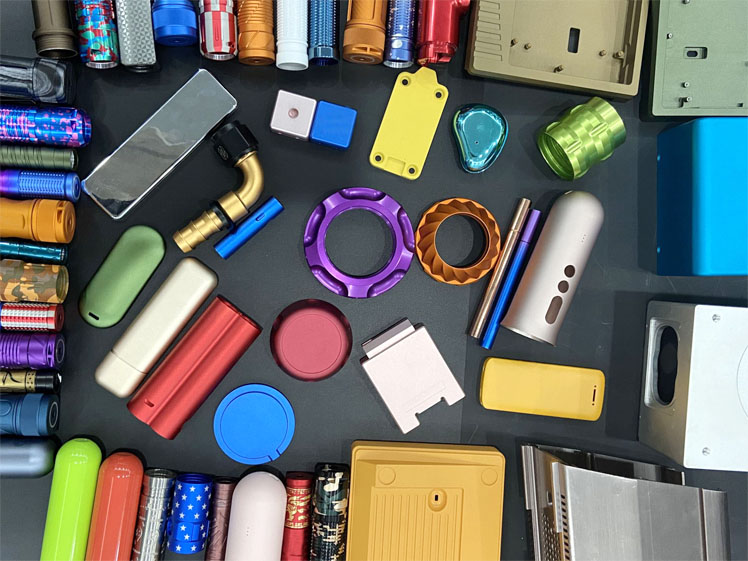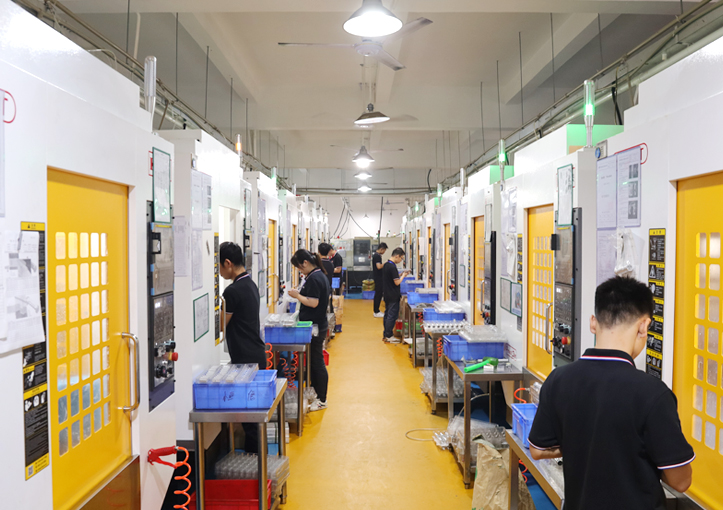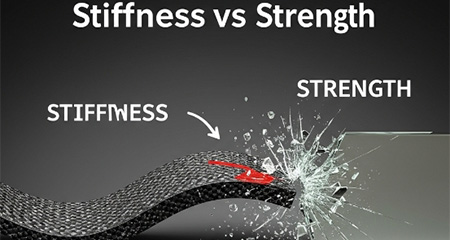Stiffness vs. Strength: What’s the Difference?
Confusing stiffness with strength leads to poor material selection. That means failed designs, costly rework, or even safety risks. Learn the real difference. Stiffness is a material’s resistance to deformation, while strength is its ability to withstand an applied force without breaking. Engineers must understand both to ensure durable and functional designs.
Let’s explore the critical differences, measurements, and real-world applications of strength and stiffness in engineering and CNC machining.
What is the Stiffness of a Material?
Stiffness is the ability of a material to resist deformation under applied force, and in engineering it is the slope of the stress-strain curve in the elastic deformation region. It is usually measured as Young’s modulus. In the SI system of units, stiffness is usually measured in newtons per meter. In imperial units, stiffness is usually measured in pounds per inch.
Stiffness is different from strength. A material can be very stiff but brittle and easily fail if subjected to excessive stress. Materials such as tungsten, carbon fiber, and certain ceramics are known for their material stiffness.

What is Strength in Materials?
Yield strength of materials represents the stress point at which plastic deformation begins. Strength measures the maximum load a material can handle before it fails. This includes tensile strength, yield strength, and ultimate strength of materials.
Tensile strength of the material is often used in metal CNC machining to select proper alloys for structural integrity.
Stiffness vs Strength: What’s the Difference?
Knowing the difference between stiffness and strength helps in choosing the right material for CNC machined parts.
Here’s a simple comparison:
| Aspect | Stiffness | Strength |
|---|---|---|
| Definition | Resistance to bending or elastic deformation | Ability to withstand force before breaking or permanent deformation |
| Measured By | Elastic modulus (E), in N/m or GPa | Yield strength or ultimate tensile strength, in MPa or psi |
| Purpose in Design | Controls deflection and maintains shape in precision parts | Ensures parts can carry load without failing |
| Engineering Use | Applied in tight-tolerance CNC components and structural rigidity | Used in load-bearing parts and structural supports |
| Material Example | Ceramic – stiff but brittle | Steel – strong and durable |
Stiffness and Strength in CNC Machined Parts
In CNC machining, it’s important to balance strength and stiffness to make sure parts work well without bending or breaking. The material you choose should match what the part needs to do. For housings, stiffness helps them hold their shape under pressure from bolts, while shafts need strong materials to handle spinning forces.
Advanced materials like 7075 aluminum and PEEK are great for precision parts made with 5-axis CNC machining. 7075 aluminum is strong and stiff, while PEEK is tough, wear-resistant, and holds up well in harsh conditions.
How Does Surface Treatment Affect Stiffness and Strength?
Surface treatments like anodizing or nitriding can enhance surface hardness and wear resistance but may reduce ductility, impacting the overall strength of a part. These treatments are often used to protect custom CNC parts in demanding environments, where durability is critical.
However, coatings with high stickiness can affect tolerance fits or create stress concentrations, potentially leading to failure. Choosing the right surface treatment is crucial for maintaining the balance between strength, stiffness, and functionality in CNC-machined components.

How are Stiffness and Strength Measured in Engineering?
In engineering, stiffness and strength are key properties that determine how a material or part will perform under various loads. Different tests and units are used to measure these properties, providing insights into a material’s suitability for specific applications. The table below outlines common methods and their corresponding measurements.
What Role do Stiffness and Strength Play in Tolerance Design?
Stiffness of a material affects deflection under load, which directly impacts tolerance stack-ups in precision assemblies. Using high stiffness materials reduces potential gap or misfit due to load deformation. On the other hand, choosing a high yield strength metal ensures no permanent shape change under load.
Start Your Machining Project at VMT!
With over 15 years of experience in CNC machining, VMT is a trusted, high-quality machining factory dedicated to excellence. We pride ourselves on delivering precision, durability, and superior craftsmanship in every part we produce.
Our commitment to quality has earned the trust of customers worldwide. At VMT, we offer comprehensive one-stop services, from design and prototyping to mass production and finishing, ensuring your project is handled with expertise and care at every step.

In Conclusion
Understanding the balance between stiffness and strength is essential for designing CNC-machined parts that are both safe and efficient. Stiffness ensures parts maintain their shape under load, while strength prevents failure under stress.
Frequently Asked Questions About Stiffness and Strength
What is the Difference Between Stiff and Strong?
Stiffness is the ability of a material to resist deformation under an applied force, measured by its modulus of elasticity. Strength, on the other hand, is the maximum stress a material can withstand before failing. A stiff material may not necessarily be strong, and vice versa—for example, glass is stiff but brittle, while rubber is strong but flexible.
Is Stiffness the Same as Impact Strength?
No, stiffness and impact strength are different. Stiffness measures resistance to deformation under a static load, while impact strength indicates a material’s ability to absorb energy during a sudden impact without fracturing. For example, a material can be stiff but lack sufficient impact strength to handle sudden shocks.




